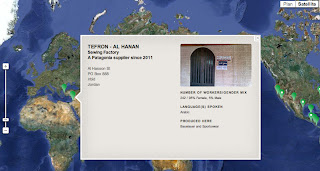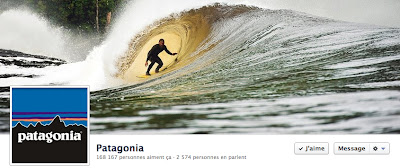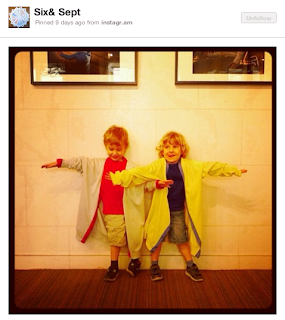On the sports level, Nike's "Find Greatness" campaign generated a lot of buzz. However, a french magazine titled this month Adidas as the real winner of the Olympic games.
This article is an investigation upon the two brands : their strategy on social networks, what works the most ... and the less
Nike
This article will focus on the last months, and more peculiarly the campaign "Find Greatness", that took a great first step during the olympics.
I'll let you watch (again) the ad they released two weeks ago and that has already hit more than 4.5 million views.
"Find Greatness" - Nike
How does Nike do that ? With an app, or the fuelband, a sort of bracelet specifically designed to count and add up all your physical efforts.
Nike Fuelband
Nike's ad for "Make it count"
Their Facebook strategy : keep on inspiring people, always in the action mode : make people move more seems to be their motto.
Their partner athletes also appear on their Facebook page, and are always a reminder of this call for action.
Nike on Facebook (7th August 2012)
Let's note here that their Facebook strategy is centralized : one page for the whole community, and one community animation.
Nike uses Twitter for product marketing and inspiration with the @Nike account (593 710 followers)
Another very interesting use of Twitter is the @Nikedigitaljobs account, dedicated to recruitment, an account followed by nearly 1000 people. Although the animation of the account is not always relevant to recruitment (sometimes, the use of news such as "I've completed a 8.00 mi run"), the community manager is very prone to answer to tweets.
Also to be noted, the very sober description of the @Nike account "If You Have A Body, You're An Athlete". But, as they say : a few words say it all.
Except for Nike Basketball and Nike Running Turkey, Nike is not present on Pinterest. However, prints or images from Nike are very regularly pinned and repinned on Pinterest. For example, the image below was liked more than 900 times, commented more than 300 times, and repinned more than 6000 times !
There also exists a fan board for Nike which already has 300 followers on Pinterest (a number who tripled in 6 weeks !)
Conclusion
On the global standpoint, it is true that Nike has a very coherent social networks strategy : every campaign is relayed in the same tone and addresses the audience as if only one person was animating every social network device.
We can really emphasize on the priority that has been given by Nike on digital marketing. In the US, TV, print and written press budget was reduced by 40% between 2008 and 2011 while the global advertising has gone crescendo. A clear turn in budgets, emphasized by a doubling of recruitment for digital teams.
Adidas
A first anecdote to start with is that Adidas, as the official sponsor of the Olympic Games, spend more than 100 million euros for the sponsoring of the 2012 Olympic Games (source : Capital magazine, France).
The image that Adidas defends, whether it is on social networks or traditional advertising, is less based on pure sport or physical intense effort. Their image is more trendy, and fashion based. While Adidas keeps on equipping athletes, the brand has also chosen new and different icons like Kate Perry or I Am.
Likewise, this year, Adidas has also chosen a new design for their website, not too far from Pinterest's board design. A much more agreeable design, which still has sales objetives (it is not a solely inspirational website)
Adidas's new website
Adidas has a more decentralized Facebook strategy than that of Nike. For example : it has a dedicated page to Adidas Originals (more than 15 million fans, more than the official Adidas page). Despite the enormous community, the community management of the page is sometimes incoherent, with statuses sometimes written in French and sometimes in English...
On several others sports and countries, Adidas has chosen to decentralize their community management. A diametrically opposed strategy than Nike, but therefore creating less synergy around the brand.
A choice that many brands have to face a day or another :
- Create separate universes with a higher engagement rate for each of the pages because the audience / themes are more targeted
- Or keep a general account, designed for more inspirational aims
Clearly, while Nike is a perfect example of the second strategy, Adidas has chosen to separate the universes.
Adidas Originals on Facebook
Adidas' twitter account (23 475 followers) was very animated during the Olympics, with a nearly continuous updating about Adidas's partner Athletes.
On the whole, their twitter strategy is quite classic : news about sports, Adidas events or products, and tweets about their partners.
But once again, the strategy is divided between the different universes (originals, basketball).. and even in between the countries, which is quite difficult when you just want to follow one account that sums it all.
Unlike Nike, Adidas is present on Pinterest, with 5 different boards : Womens' performance, mens' performance, adidas is all in, menswear, womenswear.
Adidas on Pinterest
All in all, the repin rate for Adidas is quite low: 4 or 5 repins on the average
It is quite a shame : Adidas could really take advantage of their more-than-10-million-fans online community to post and share new content on Pinterest. For example, with more inspirational pins on the universe of streetdance for Adidas Originals, a universe they partially defend on their Facebook page.
Conclusion
I lead last week a quick comparison of the social networks strategy of both brands on Facebook (based on their 12 last posts)
Adidas
|
Nike
| |
Number of fans
|
8 766 229
|
10 047 300
|
Average likes / post
|
3 124
|
10 834
|
Average comments / post
|
83
|
164
|
Number of posts in the last 7 days
|
26
|
14
|
Proportionally, Nike atteins a much higher engagement rate in terms of likes and comments than Adidas.
My first impression was that the coherence and sometimes sobriety of Nike's strategy is a great advantage for them. No need for them to dig deep into the physical characteristics of their products to convince their followers to like their page. Indeed, likers of Nike pages / accounts seem to already be convinced of the values of the brand, and all there is left is to animate and nurture this Nike inspiration.
Likewise, Adidas' marketing strategy on the global has diversified itself, with new targets (fashion, streets...). It is therefore more difficult for the brand to maintain a unique tone for its different pages. One solution could be to separate the brand universes : streets v.s sports, for example.
But as a whole, the use the two brands make of social networks is very successful, as proven by their number of fans and followers. And a real priority was given to the marketing strategies (and especially online marketing) of the two brands (Adidas' 2011 worldwide marketing budget was of 1,36 million dollars)
A next step could neverthless be taken. Pinterest, for Nike and Adidas, seems like an interesting opportunity to diversify their content, affirm their message, and reach a feminine audience. Even though Adidas has started to launch their page on Pinterest and probably given the example, the path still has to be traced !



























